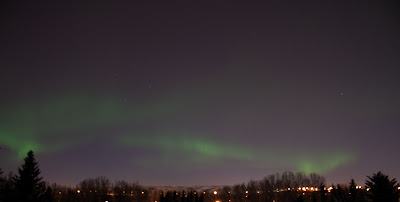Back in early September, I accompanied the sed/strat class at SU on a field trip to the eastern shores of Lake Ontario.
 |
| Field trip location marked on a map showing Lake Ontario and New York State. |
The field trip was to look at part of a large freshwater barrier beach system that stretches for over 25km along the New York State shoreline of Lake Ontario.
 |
| Eastern Lake Ontario, with the approximate extent of the barrier/dune system outlined (the barriers are still visible on the map, immediately right of the dotted line. The Tug Hill Region is shown for reference. Basemap created using www.geomapapp.org |
Our first stop was at Sandy Island Beach State Park, a tiny New York State Park between North and South Ponds. This section of the dune complex is over 1000 years old; most of the sand in the system has been inherited from previous highstands in the Ontario Basin (Woodrow et al., 2012).
 |
| Two topographic maps of the Sandy Pond area: a National Geographic topo map on the left and a USGS topographic profile from www.geomapapp.org on the right, both projected in Google Earth. Click for a larger version. |
This beach is sandy, as the name implies, but it also has many well-rounded, hand-sized cobbles, especially just beyond the shore. These cobbles are not from the Appalachian Basin: some of the cobbles were granite, probably coming from the Canadian Shield.
 |
| Overlooking the beach at Sandy Island Beach State Park |
 |
| Sandy Island Beach, looking northeast. |
Three types of sedimentary structures can be seen on the beach: ripples, dunes, and the arced shoreline. These are all bedforms, shaped by the movement of fluids (waves, wind, and currents): the ripples are small wavelength, the dunes are much larger wavelength, and the arc of the beach is the largest wavelength.
 |
| A trench dug in the beach (perpendicular to the shoreline) shows low-angle laminations dipping toward the water. Wave action has sorted the sand grains- the darker layers are darker, heavier minerals). |
 |
| Grass covered dunes landward of Sandy Island Beach |
From the beach, we met up with a boat that took us across North Pond to the barrier dunes.
 |
| Crossing North Pond (looking approximately southeast) |
At the other end of the pond is Sandy Pond Beach Unique Area, accessible only by boat. A boardwalk has been built to cross from the pond-side to the lake-side. This protects the dune from humans and humans from poison ivy.
 |
| Dunes with trees! The highest dunes in the area (NOT pictured) are 15m above Lake Ontario. |
The beach on the pond-side of the barrier island had some very cool dendritic traces. They were composed of raised networks of sand and were quite extensive. I don't know if they formed on top of the beach like they're pictured, or if a layer of sand covering them washed away. If anyone knows what creature created these, please let me know in the comments!
 |
| Mystery trace/burrow. |
 |
| The lake-side of the barrier dune complex. |
 |
| Beach on a barrier island. We were invited to join some beach-goers for an afternoon party, but reluctantly declined. |
 |
| I can't remember if this sand profile is perpendicular to the shoreline or not. If it is, the laminations look very different than on the first beach we visited. |
 |
| The sand has built up inside the channel so much that plants are growing there. Needless to say, it is problematic for boaters trying to get into Lake Ontario. |
 |
| Birds in the shallow water just inside the channel entrance. |
 |
| Our boat, waiting while we check out the channel. |
 |
| This great board explains sand transport to beachgoers. |
*Woodrow et al, 2012 can be found here: http://www.epa.gov/ecopage/ELOSTS.pdf




















































